The motion picture industry has come a long way since the silent movies of yesteryear. The use of CGI and special effects capture our imaginations, but have these reduced the environmental impacts associated with filming?
The recent release of Mad Max: Fury Road has rekindled discussion about damage to sensitive sand dune environments, reportedly caused during the film’s production on the Namibian coastline.
The environmental credentials of the motion picture industry have been questioned before. Films set in natural environments, such as The Beach (2000), the Lord of the Rings trilogy (2001-2003) and The Hobbit trilogy (2012-2015), have all received scrutiny.
Real-world impacts
The overall impact of film production is a combination three key factors: scale, extent and duration. Scale refers to the local, regional, national or global context. Extent refers to the size of the impact, or the area being affected. Duration considers how long the environment will be exposed to any impacts.
Globally, the motion picture industry contributes directly to greenhouse gas emissions (GHG) through travel and other fuel consumption associated with productions. Research from UCLA shows that the GHG burden varies depending on the scale. This study revealed that the industry has a relatively high regional impact, but this is reduced at a countrywide level and compared with other industries.
Locally, direct environmental impacts of filming may disturb wildlife and habitats, through sound and light pollution, trampling vegetation, constructing sets and increasing waste generation. Film production impacts are typically considered and mitigated against through permitting processes.
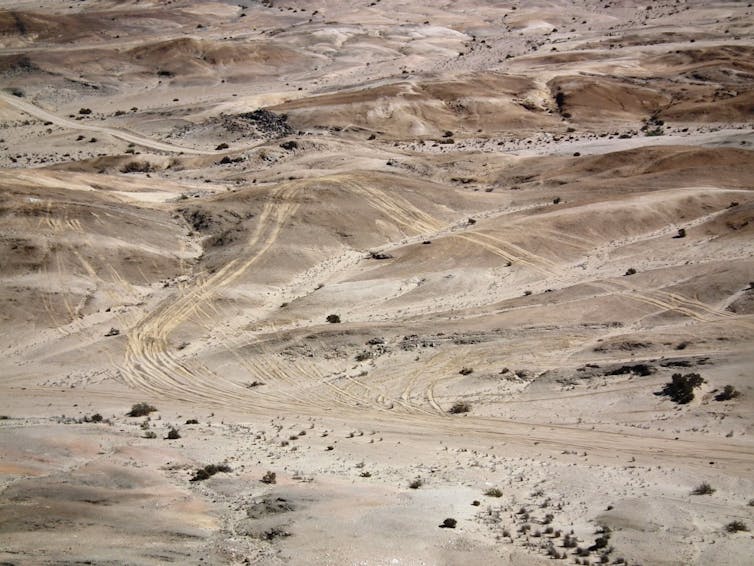
In New Zealand the Department of Conservation has established a code of practice for filming on conservation lands. The Namibia Filming Commission manages filming permits in Namibia, and approved Mad Max with rehabilitation requirements for any environmental damage.
In Australia, Hollywood blockbusters - including Scooby Doo (2002), Peter Pan (2003) and San Andreas (2015) – are often filmed on the Gold Coast in Queensland. The facilities at Village Roadshow Studios and the range of natural environments are major drawcards.
Filming in City of Gold Coast locations is managed by the local authorities. New guidelines covering filming in conservation reserves were published in 2013. These guidelines prohibit access to some conservation areas, and all activities require prior approval, environmental impact assessments and plans to mitigate any potential impacts.
Dead Men leave no trace?
Filming is currently under way on the Gold Coast for Pirates of the Caribbean: Dead Men Tell No Tales (2017). What environmental impact is this production having, and how significant are these compared with other industries in Queensland?
While authorities tried to keep the locations of some of the filming under wraps, as a local it is hard to overlook massive production sets. Once locations are known, it is possible to quantify the footprint of these shoots using before/after satellite imagery.
The extent of the production footprint is about 7.4 hectares for the “pirate village” (the first set of images below) and 4ha for the “greenscreen” set (the second set of images). In both cases the landscape prior to filming could not be considered “natural habitat”, and direct environmental impacts may be negligible. However, these are not the only impacts to consider - local residents may complain of sleepless nights from lighting or noise, and the waste generated.
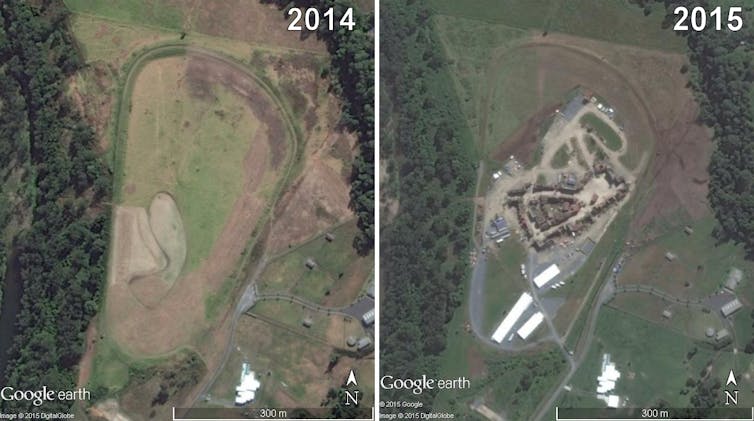
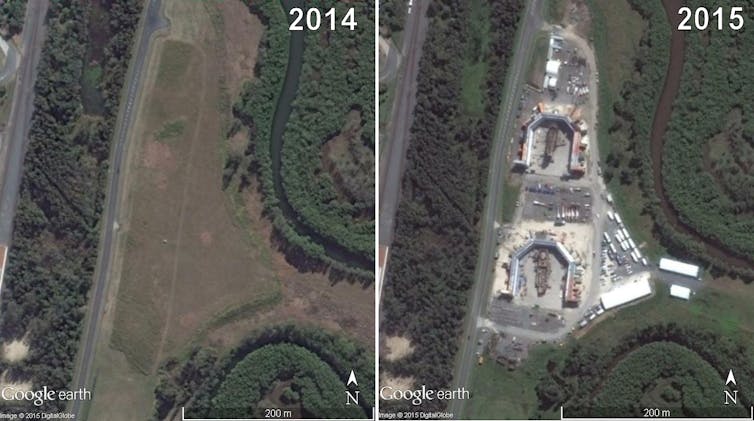
A landscape with a thousand cuts
How then do these impacts compare with other land uses? To put the film industry impacts in perspective I made a quick comparison by producing similar before/after snapshots of the coal seam gas (CSG) industry and urban developments in Queensland.
Without getting into the controversy surrounding CSG mining, each CSG well site removes about 1ha of habitat. In Queensland there are more than 8,900 well sites, of which about 11% are producing gas. The exploration impacts of those not in use remain, and all up amount to almost 9,000ha, albeit not necessarily all in natural habitat. Roads used to access these sites are another impact on the landscape, and contribute to habitat fragmentation.
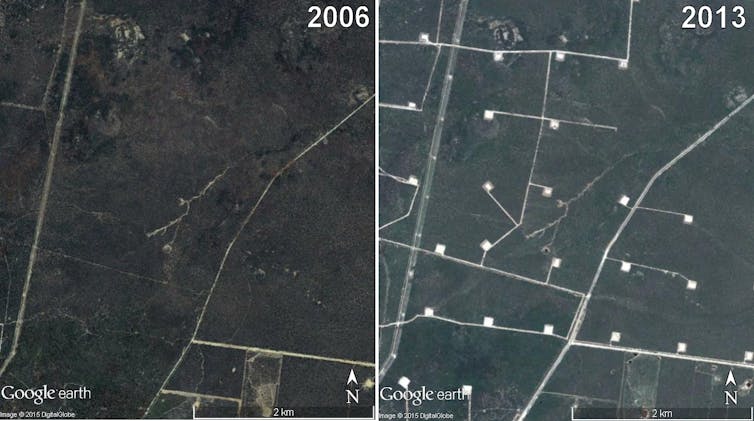
Urban development is another major land use that affects our natural environment. Residential expansion to accommodate burgeoning human populations often removes important wildlife habitat. While retaining habitat fragments and corridors in these new urban landscapes might mitigate some impacts, it also introduces others such as the potential for increased road mortality.
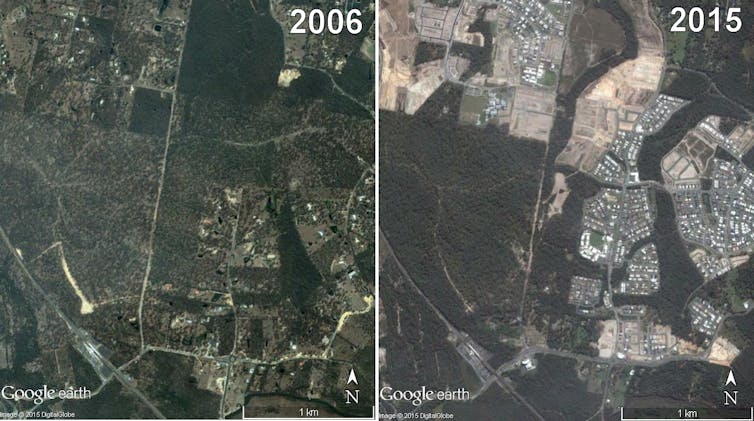
The film industry can and does impact the natural environment. Generally, these impacts are likely to be small in extent and duration when on location, particularly compared to other land uses. Mitigation requirements and habitat restoration following filming can reduce the negative effects.
Furthermore, the film industry also injects revenue into many economies and once filming is complete can boost tourism to areas, as visitors travel to see the locations they saw on the big screen. Of course increased visitation to protected areas may result in greater impacts to these areas, but that is a story for another time.

